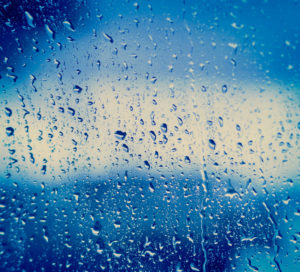Chimneys are built to last. Although masonry is one of the toughest building materials in the world, it can still deteriorate over time due to aging, damage, or overexposure to the elements. Luckily, there are pro-active ways that homeowners can protect their chimneys against damage.
Because water can be extremely damaging to masonry, it is important to protect your chimney against it. Waterproofing is one of the most effective preventative maintenance applications homeowners can have put on their chimneys. Having your chimney waterproofed can protect it against future water damage, as well as slow – or stop – the progression of current masonry deterioration.
What is waterproofing?
The waterproofing process for chimneys involves applying specially-designed water repellent to the bricks and mortar of the chimney. This creates a protective barrier that keeps water from being absorbed by the masonry, protecting the bricks against water damage.
Bricks are a naturally porous building material, making them ideally suited for chimney construction. While this porous nature allows gasses to pass through the bricks to the outside, it also can allow water in. If too much water is absorbed by the bricks it can cause them to crack, chip, or break away from the chimney structure; this affects not only the curb appeal but also the structural stability of your chimney.
Paint vs sealants vs repellents
Not all waterproofing products are created equally. Because of this, it is important to only use professional strength masonry water repellents. While the names are often used interchangeably, paint, sealants, and repellents are all very different products that can have different effects on your chimney.
– Paint: Regular house paint is not vapor permeable and is not meant to keep water out; by painting the masonry you are trapping water and gas inside the bricks. Trapped moisture will continue to deteriorate the masonry behind the paint, causing unseen damage. Paint over masonry that has bubbled or flaked is a sign that there is trapped water – and damaged masonry – underneath.
– Sealant: Sealants are often clear or slightly tinted and are designed to keep water from being absorbed. However, most sealants are not vapor permeable and therefore trap moisture inside the masonry just like paint.
– Repellents: Water repellents are the best products to use on masonry. A repellent forms a thin, vapor permeable barrier on the masonry that allows water and gas to evaporate while still preventing new moisture from being absorbed. This not only protects the masonry from new water damage, but can help stop existing deterioration. Repellents aren’t just for your masonry; they can also be used to waterproof your chimney crown.
Proactively caring for your chimney can minimize damage and extend its lifespan. By having your masonry waterproofed, you can help protect it for years to come against water damage from weather, humidity, sprinklers, and hoses. For more information on waterproofing your chimney, contact Jack Pixley Sweeps today!
